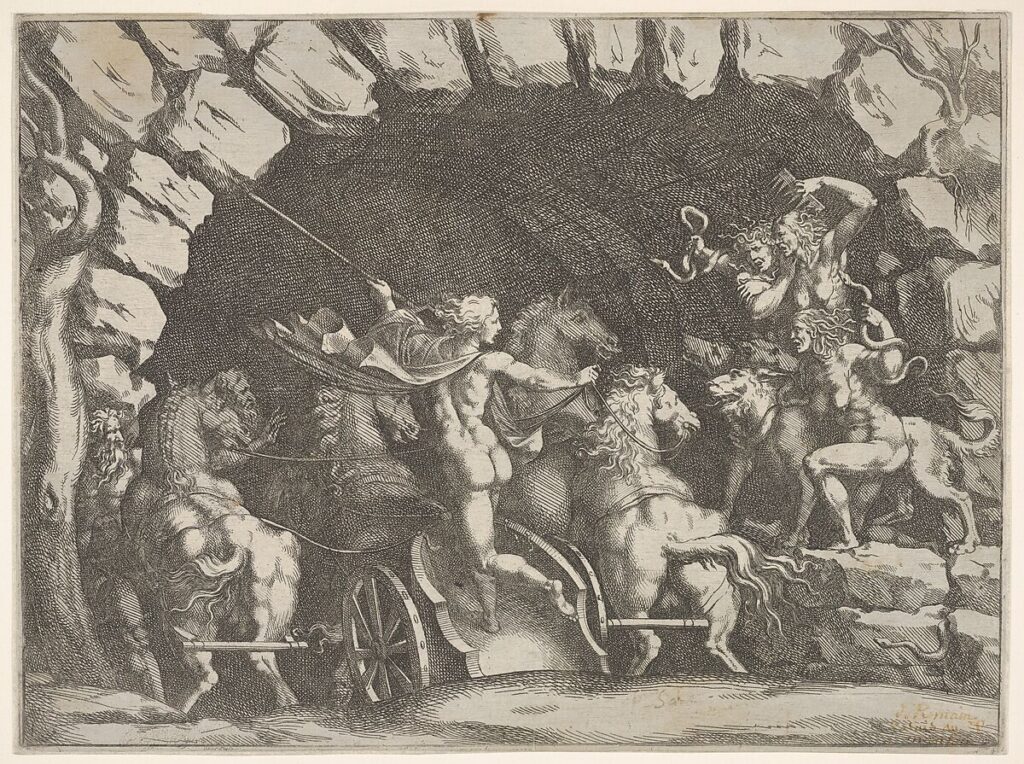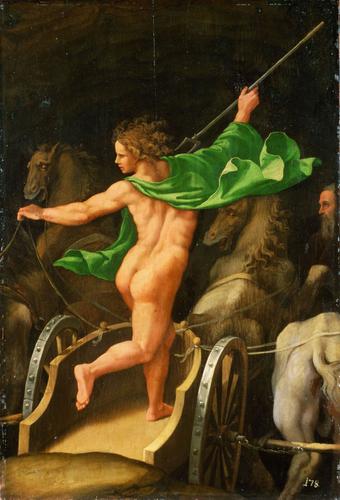I choose to explore The Met’s online archives from the Drawing and Prints collection which contains drawings and prints from across different time periods and locations.
The first art I’ve selected is “Pluto on his Chariot Descending into Hades” by Pietro Santo Bartoli who copied it from Giulio Bonasone who copied it from Giulio Romano. So it’s a copy of a copy which I found pretty interesting. The original was a painting and the one in The Met is etched on a 20cm by 25cm sheet. I enjoy reading about and looking at pieces on Hellenistic religions so the name caught my eye. As I began to inspect the art, I wondered about who the figures were. Pluto/Hades is obvious, the bident and the name of the art is clear to who the main subject is. The three headed dog is obviously Kerberos/Cerberus. While the woman is less clear. Studying their features reveals they have snakes in their hair, which could indicate them being Gorgons. The Gorgon sisters Medusa, Stheno, and Euryale do have snake hair. Though the title gives away the mystery, they were in fact the Furies. Which puzzled me at first, some cursory research did show that the Eumenides were also commonly depicted with serpentine hair.

The last figures were displayed on the left with no explanation as to who they are. They appear as old men reaching out to Pluto. So my theory is that they are part of the centrists that occupy the vestibules of Hell that are being trampled by the horses that pull the chariot. I do love doing a little bit of speculation on art like this.

Next is “Knight’s Lance”, a trading card found in Allen & Ginter Brand Cigarettes. This one caught my eye because knights are another one of my interests and it was interesting to see what context this was being used in. Trading cards and cigarettes is a combination that would never happen in modern times, what with the increased disdain and sterilization of designs for smoking and smoking products. So this was a glimpse into the weird and wacky world of the whimsical ways companies would try to promote their product, not unlike how some kid shows and toys would try to promote themselves.
Lastly is “Huntress Kneeling before an Armed Goddess” by Eustache Le Sueur. Just like Pluto from before, I surmise that the art is Hellenistic in inspiration. The dimensions of this art is 6 by 6 inches done with black chalk. The difference between this and Pluto is that I can not surmise who the figures the art is meant to represent. I can guess a whole bunch of famed goddesses and huntresses in Greek myths but there isn’t enough detail to nail who it is. For all I know, the goddess could be of non-Greek origin. Could even be a valkyrie. But I chose this because I wanted to speculate on it.





